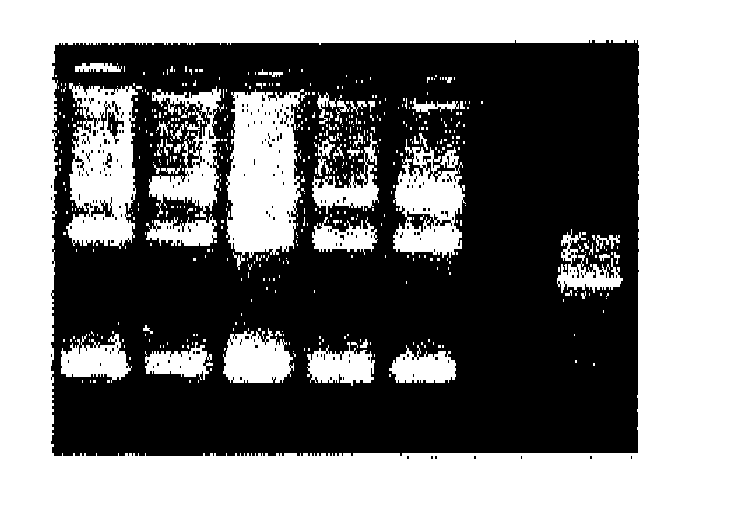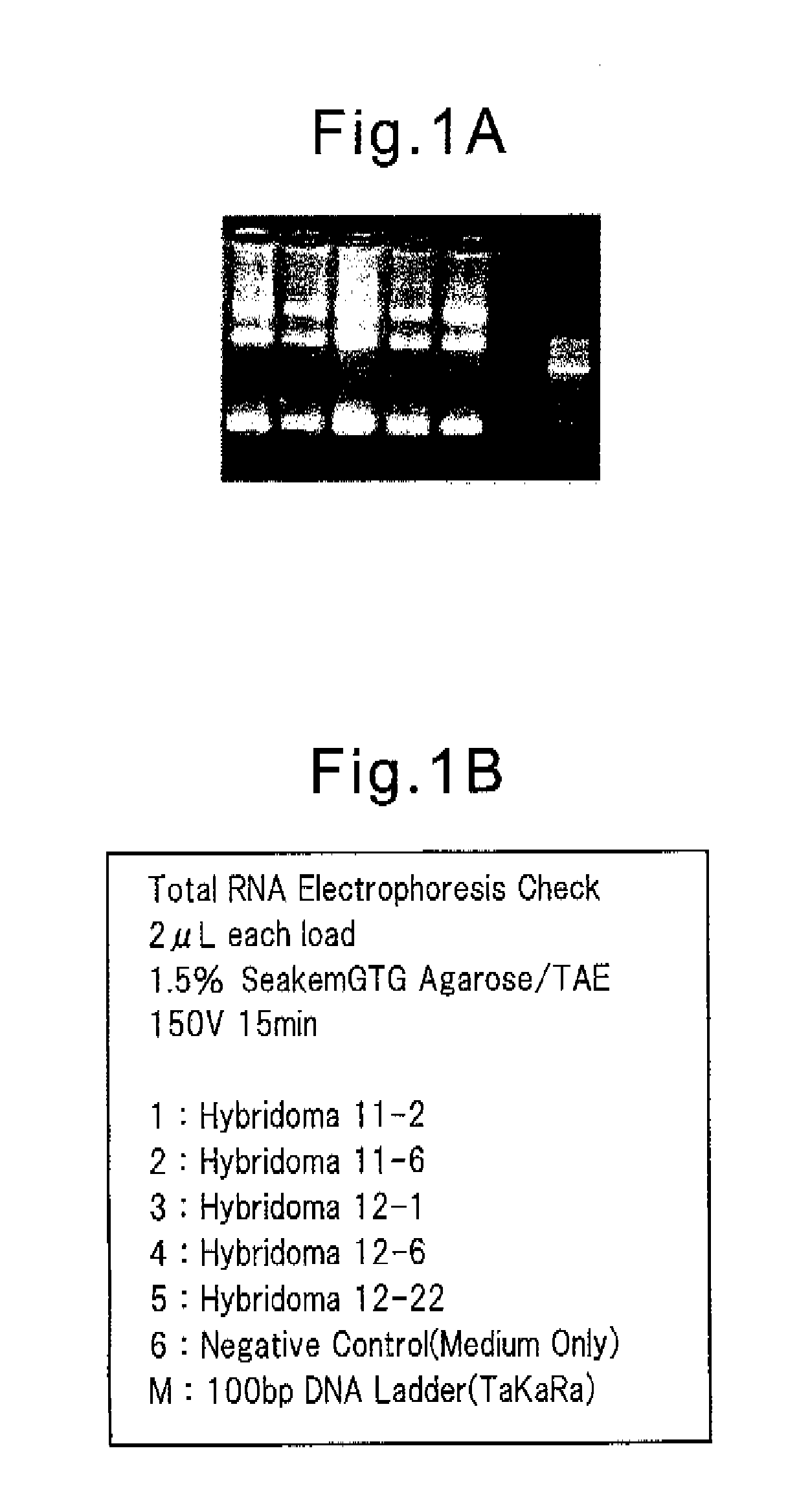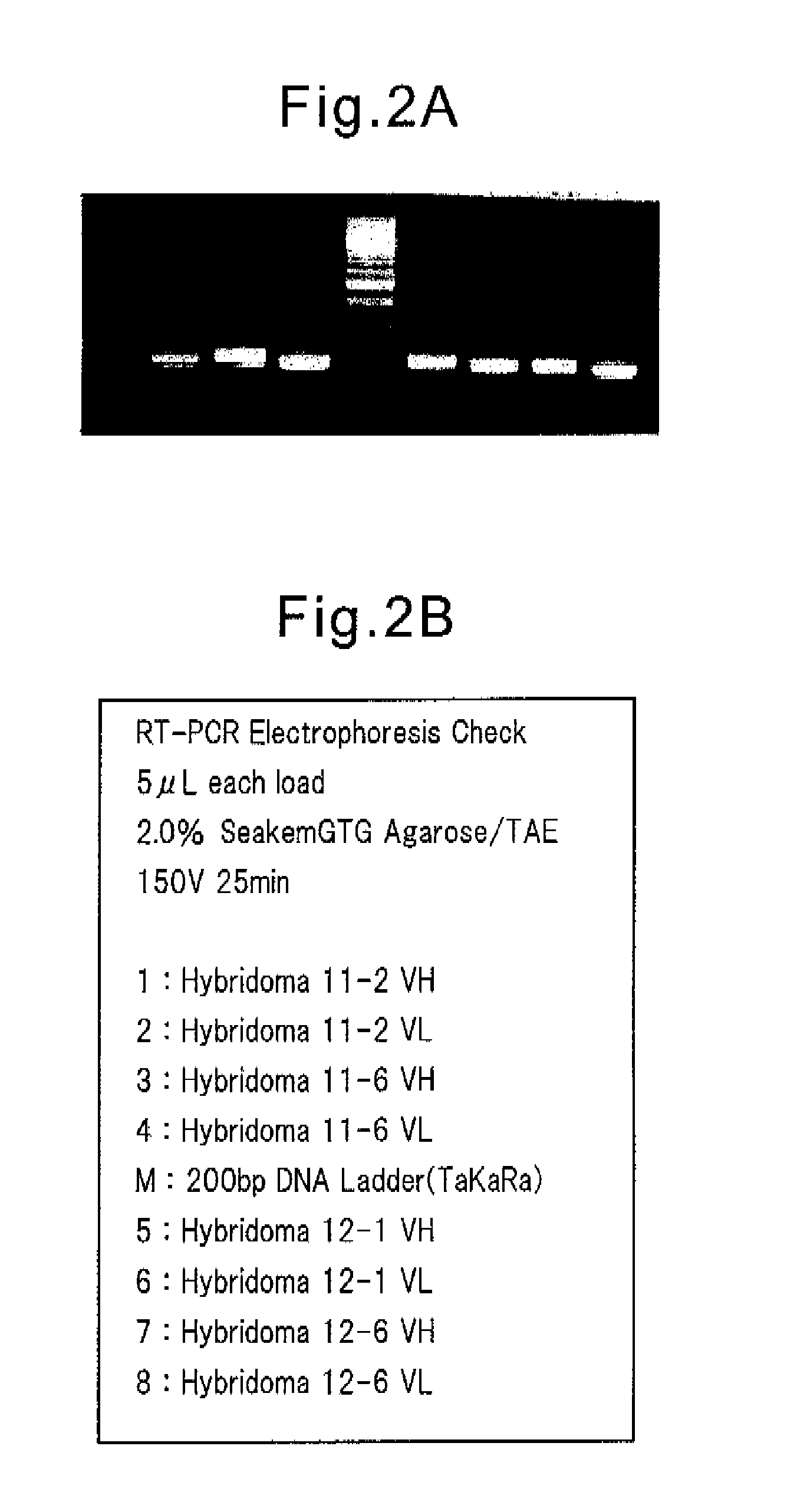Process for antibody production
a technology of antibody production and process, which is applied in the field of producing antibodies, can solve the problems of high cost of generating antibodies, and achieve the effect of easy and short time-consuming and labor-intensive work of antibody production
- Summary
- Abstract
- Description
- Claims
- Application Information
AI Technical Summary
Benefits of technology
Problems solved by technology
Method used
Image
Examples
example 1
[0100]The example describes a method of generating antibody IgG1 using the S100A10 protein as the antigen.
Extraction of Spleen Cells (Splenocytes)
[0101]After visual identification, mouse spleens were extracted and washed. Spleens from two animals were placed on a mesh, mashed with a cell scraper, centrifuged (1300 rpm×3 min, 4° C.), and the cells were collected. Then, after suspending the cells in 3 mL of ACK lysing buffer, 10 mL of PBS(−) was added thereto. The cells were centrifuged (1300 rpm×3 min, 4° C.) and collected, which were then suspended in 6 mL of RPMI1640(−). Through a cell strainer, insoluble fats etc. were removed.
In Vitro Immunization
[0102]The concentration of the S100A10 protein antigen was determined using an assay kit (Dc Protein Assay kit, manufactured by BioRad). As the standard, BSA (manufactured by Sigma) was used. A predetermined amount (5 μg or 20 μg) of the S100A10 protein antigen of a known concentration was aliquoted, to which 100 μl (50 μl per mouse) of ...
example 2
[0113]The present example describes the step of extracting the anti-S100A10 antibody gene and expressing antibody in Escherichia coli.
DNA Extraction, and Preparation of a Single Chain Antibody scFv Plasmid
[0114]From the B cells and hybridomas 1.5×106 cells after immunization, total RNA was obtained using Isogon (manufactured by NIPPON GENE). The immunized cells obtained in the in vitro immunization step described in the above Example 1 may also be used in this step.
[0115]Then, the acquisition of total RNA was confirmed by 1.2% agarose gel electrophoresis. The results obtained are shown in FIG. 1A and FIG. 1B.
[0116]Using the total RNA obtained as the template and the mouse VH gene-specific primer and the mouse VL gene-specific primer as the primer, a single chain cDNA was synthesized using the ReverTra Ace (TOYOBO) reagent. The 1st PCR was carried out with the cDNA prepared as the template, and a primer VH forward primer mix / VH reverse primer mix or forward primer mix / VL reverse pri...
example 3
[0128]The procedure described in the above Example 1 was repeated. In this example, however, the S10A1 protein and the S100A10 protein were used as antigens and the in vitro immunization was conducted in a manner similar to the above Example 1, and IgG1 positivity was calculated. FIG. 6 plots the result thus obtained. Though there is some variation depending on the antigen, it can be confirmed from FIG. 6, that class switching to IgG1 has occurred in both cases at high rates of not smaller than 60%.
[0129]In accordance with the present invention, it was demonstrated that in the in vitro immunization, an effective class switching can be attained by adding a stimulating substance such as LPS (40 μg / mL), IL-4, IL-5 (10 ng / mL), anti-CD38 antibody and anti-CD40 antibody (1 μg / mL) once after immunization, and culturing for four days in the presence of the stimulating substance.
PUM
| Property | Measurement | Unit |
|---|---|---|
| concentration | aaaaa | aaaaa |
| concentration | aaaaa | aaaaa |
| concentration | aaaaa | aaaaa |
Abstract
Description
Claims
Application Information
 Login to View More
Login to View More - R&D
- Intellectual Property
- Life Sciences
- Materials
- Tech Scout
- Unparalleled Data Quality
- Higher Quality Content
- 60% Fewer Hallucinations
Browse by: Latest US Patents, China's latest patents, Technical Efficacy Thesaurus, Application Domain, Technology Topic, Popular Technical Reports.
© 2025 PatSnap. All rights reserved.Legal|Privacy policy|Modern Slavery Act Transparency Statement|Sitemap|About US| Contact US: help@patsnap.com



